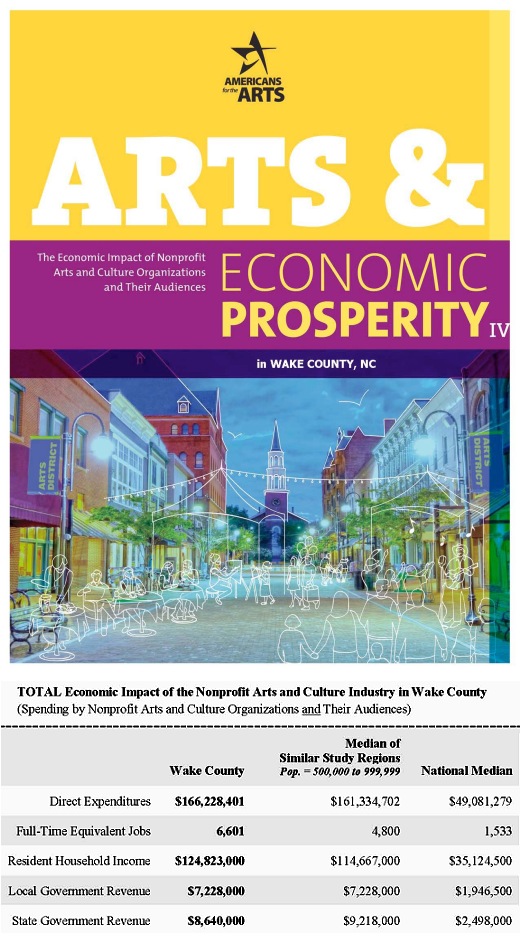The Economic Impacts of Cultural Tourism
“The two heavyweights of tourism in North Carolina are, in one corner, the cultural and heritage tourism traveler, and in the other corner the sports, outdoor, golf and NASCAR fan.”
— “The Artful Traveler: Cultural Tourism in the State of North Carolina” 1
North Carolina is a leader in cultural tourism thanks to the North Carolina Department of Cultural Resources which showcases and supports its historic sites, civil war and literary trails, local arts &crafts, and the world class performing arts. Up to 40 percent of tourism in North Carolina is cultural tourism, a healthy chunk of the $19.4 billion visitors to North Carolina spent in 2012. The state’s creative industry generates 300,000 jobs.
Chapel Hill, Raleigh, and Durham’s comprehensive and long range plans include goals and recommendations that seek to enhance historic preservation, build capacity for arts and culture, expand cultural audiences and diversity, create arts and culture districts — and brand their towns as places to creatively live, work, and play, for residents and visitors alike. 2
Reflecting these community priorities, the Convention & Visitors Bureaus for Greater Raleigh, Durham, and and Chapel Hill & Orange County enthusiastically promote arts and culture related tourism and many local historic preservation organizations also market their sites to visitors. Triangle area cultural tourism destinations — the North Carolina Arts Museum, the North Carolina Museum of Natural Sciences, the Museum of Life Sciences, the North Carolina Museum of History, and the Morehead Planetarium — were among the top 30 North Carolina destinations and attracted two million visitors in 2012.
The Arts and Economic Prosperity Studies IV in the State of North Carolina, 2012, conducted by Americans for the Arts provides compelling evidence that arts & culture is a significant sector that pumps substantial revenue into the local economy:
• Durham County arts and culture generates $125.5 million and supports 4,550 full-time equivalent jobs
• Orange County’s nonprofit arts and culture industry generates $85.4 million in economic activity and supports 3,352 jobs annually.
• Wake County (Greater Raleigh) arts and culture generates $166.2 million in total economic activity and supports 6,601 full-time equivalent jobs.
Clearly, cultural tourism in the urban Triangle is thriving.
But what of tourism in ex-urban areas? Forests, rivers, lakes, farmlands, and scenic vistas are valuable cultural tourism amenities corroborating Ed McMahon’s assertion “that virtually every study of traveler motivations has shown that, along with rest and recreation, visiting scenic areas and historic sites are the top reasons why people travel.” 3
Rural areas place a high priority on protecting existing cultural and natural resources. By building on these assets, communities can support value-added activities and employment in conservation, recreation, agriculture, preservation of historic sites, and celebration of local culture. In communities high on the natural amenities scale and with a mix of forest and open country, the number of jobs tripled between 1970 and 2006. 4 These authentic “working landscapes” can then support both primary uses and cultural, natural, and historic resources.
In Part 2, we’ll take a closer look at the impact of cultural tourism on the historic mills towns along the Haw River.
Notes:
- John A. Walker, “The Artful Traveler: Cultural Tourism in the State of North Carolina” (Appalachian State University College of Business, 2005 – pdf). ↩
- See Chapel Hill 2020 Plan;
Raleigh’s 2030 comprehensive plan; Durham Cultural Master Plan(pdf). ↩ - Ed McMahon, “Tourism and the Environment: What’s the Connection?“(Planning Comm’rs Journal #28, Fall 1997). ↩
- 2010 Rural Partners Forum: Amenity-Based Development: the context. ↩
